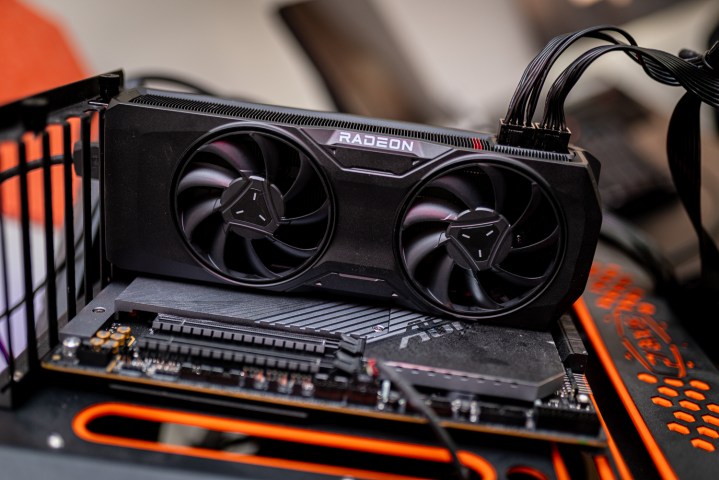
It’s safe to say that 2023 turned out to be a good year for the discrete graphics cards market. According to the latest data, both AMD and Nvidia saw an increase in add-in board (AIB) GPU shipments in the final quarter of 2023, and the year-to-year gains are also massive. While Nvidia still dominates the market, AMD’s share is climbing steadily, and Intel remains in the shadows.
Today’s round of market insights comes from Jon Peddie Research (JPR), and it’s all about discrete GPUs. According to the analyst firm, discrete GPU shipments increased by 6.8% over the fourth quarter of 2023 compared to the previous quarter. This is above the less-than-impressive 10-year average of -0.6%. The year-to-year gains are even more impressive, though, as JPR notes a 32% increase compared to the final quarter of 2022, with a total of 9.5 million GPUs shipped (as opposed to 8.9 million units at the end of 2022).
The split between AMD, Intel, and Nvidia is not a shock — Nvidia dominates with 80% of the discrete GPU market share. No matter the year or the quarter, Intel’s share accounts for a measly 1%, showing that the adoption of Intel Arc has been slow — and that’s despite the fact that Arc GPUs are a great option for budget builds right now. However, AMD’s numbers are surprisingly good.
Nvidia’s quarter-to-quarter graphics card shipment rose by 4.7%, and the year-to-year comparison turned out well, too, with a 22.3% increase. Meanwhile, compared to the fourth quarter of 2022, AMD’s GPU shipments increased by a whopping 117% during the course of 2023, while the quarter-to-quarter increase was 17%. This is reflected in AMD’s market share, which went up from 12% in the fourth quarter of 2022 to 19% a year later. Those are some massive numbers, but there are a few ways to explain AMD’s success in 2023.

For starters, AMD only had new GPUs out on the market at the very tail end of 2022; the RX 7900 XTX and RX 7900 launched on December 13, 2022. That still would have been reflected in the number of shipments, but not as much as if AMD launched these cards earlier in the year. What followed was a year of solid releases for AMD, including the RX 7800 XT, which quickly became a strong competitor against Nvidia’s pricier offerings.
AMD’s older GPUs remain competitive in performance and pricing, which can contribute to these shipment numbers. They’ve been getting discounted throughout the year and are cheaper to buy than Nvidia’s comparable RTX 30-series cards.
It’s worth noting that JPR’s data is centered around shipments, which doesn’t directly translate to sales numbers. However, the trend remains the same — the GPU market is experiencing a period of growth, and AMD is holding its ground against Nvidia. The situation might be different when the data from the first quarter of 2024 starts rolling in, as Nvidia has had three new GPUs from the RTX 40 Super refresh.
Meanwhile, AMD released a fairly unimpressive RX 7600 XT, but it followed up with the worldwide release of the RX 7900 GRE, which might very well be the best AMD card of this generation.
Editors' Recommendations
- All of the exciting new GPUs still coming in 2024
- GPU prices are back on the rise again
- Everything you need to know about buying a GPU in 2024
- You shouldn’t buy these Nvidia GPUs right now
- 5 GPUs you should buy instead of the RTX 4070





